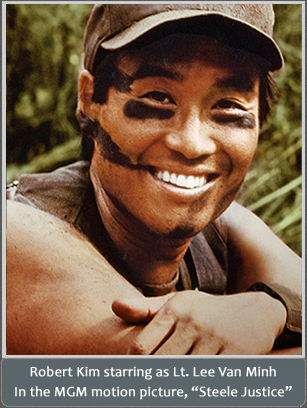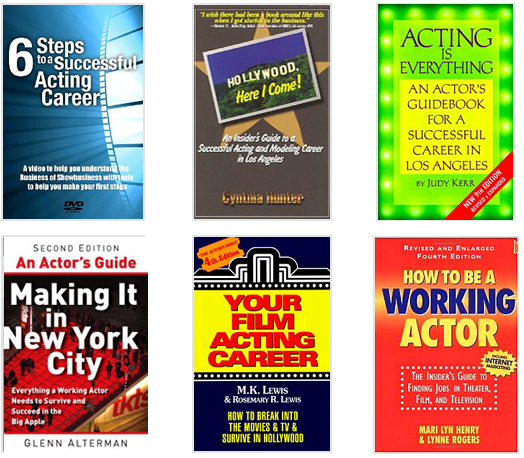About

Challenge & Diversity
Might best describe this self-made professional.
You could say that Robert Kim’s life has more subplots than a Shakespearean play.
From his motion picture debut as a child actor with Rock Hudson, to leaving high school to tour with the solid gold recording group “Climax,” to joining Mel Gibson in the feature film “Payback,” and opening four studios in Los Angeles, New York, Chicago, and Atlanta, Robert Kim has, in his own words, “done it all.” But photography has always been his passion.
Robert was asked to share his thoughts on a lifetime in the film industry in the article, “Photography for the Working Actor,” portions of which are reprinted here with the permission of Photo Optima Magazine.
RK: As a struggling actor in Hollywood, just putting food on the table can become a major priority. I’ve always enjoyed photographing people, so I thought I would try to supplement my income by doing some headshots for a couple of willing actors. My first attempts were dismal. But fortunately, I had a virtually inexhaustible supply of subjects from which to choose and I steadily improved. That dream eventually grew into four studios, the first in Los Angeles, then Chicago, New York City, and now, Atlanta. Said Robert, “They’re already calling Atlanta, “The Hollywood of the South,” and I want to help the baby grow. I think that Atlanta will become as important to the film industry as Los Angeles or New York, and then in time, possibly even surpass them,” he predicted.
RK: Do you mean, how did I do it? The short answer is, hard work. I’ve never believed in “luck.” I believe that anything of value must be earned. When it’s handed to you, you never fully appreciate it. I am extremely honored to have been independently recommended by the top eight “How to Succeed…” books for actors and models ever published — perhaps that’s where that accolade came from. But more than anything, I believe that my experience as an actor has helped me tremendously. Before me, actors had to go to photographers who were used to shooting weddings, fashion models, even birthday parties and Bar Mitzvahs. But actors’ needs are far different from models or newlyweds. They need specific shots for specific parts, and without the correct headshot, you can easily lose out on many important roles. If you’re an actor, you should go to someone who specifically understands an actor’s needs.
PO: What, in your opinion, is the biggest difference between a professional and an amateur headshot?
RK: Anyone can “take” a photograph, but to “make” a photograph is an entirely different thing. Nearly every photographer uses the same cameras, and nowadays anyone with a digital camera can create a website and call themselves a “professional.” But it takes years of experience, the right equipment, incredible patience, and most of all an eye for selectivity. What you’re really paying for is the photographer’s vision.
RK: Before actors became “bi-coastal,” spending more time on the West Coast for TV pilot season, Los Angeles headshots looked far different from their New York cousins. While NY photos resembled black-and-white mug shots, LA headshots took more into consideration the actor’s actual personality, adding more interest and “pizzazz” to their photographs, often showing more body in the shot when necessary. We were the first to shoot headshots in color, as well. But nowadays there’s virtually no difference at all between a headshot taken on either coast, ever since coast-to-coast travel and the Internet gave people a look at the work of the top Hollywood photographers, instantaneously.
RK: I believe in continual learning. Like acting, you’re never quite “there,” there is always something new to learn. I have seen many photographers come and go over the years, and I think it’s because they’ve forgotten this important rule. You’re either moving forward over time, or falling back. I’ve never tried to copy the “current trend,” because like fashion, in a few years, everything will change. But I’d rather be a leader than a follower. I believe in using the true and time-tested methods that I’ve perfected over the years, and it has never let me down. The best equipment and best technique yield the best results.
RK: It’s been an incredible adventure. I’ve photographed the great and not-so-great. But by far my biggest thrill has always come from taking a undiscovered talent and creating what I call a “Success Image” that will get a completely unknown artist noticed for the very first time. The fact is, most actors don’t realize that famous actors don’t need a good headshot as much as an totally unknown one. Everybody knows who Angelina Jolie is by now, but she was only 16 when I did her first headshot, then 20-years old when she submitted the headshot from our second session that landed Angie her first starring role in the cult classic, “Hackers.” George Lopez and Tim Allen were still doing standup comedy when they first came to me. A few months later, they became highest paid comics in television history. Their manager, Rick Messina, sent me two more of his clients, Drew Carey and Janine Garofalo, and they too rose to meteoric success. That’s why a great headshot can often be the start of a great career, and a bad one can destroy a career before it even gets started.
RK: When my headshot business took off, I had to drastically cut down on my acting commitments, but I still keep my hand in, recently doing two episodes of “Law & Order.” I talk with agents and casting directors often, so I can stay on top of what they’re looking for, and why. Actors’ needs are constantly changing. They wanted me to reprise my role in “Honeymoon In Vegas” for the Broadway stage, but I couldn’t make the commitment. But I was extremely flattered that they’d asked.
RK: All I can offer is what works for me: Be fearless in the pursuit of your dreams, and always give 100% of yourself. The universe will take care of the rest.
RK: I never plan too far into the future. Tomorrow isn’t a guarantee. That’s what makes the journey so interesting!
Robert Kim is the most published headshot photographer in the history of the industry. Here is a small sampling of the references in which he is featured:
(Pick up the new edition of “An Actors Guide: Making It In New York,” from Random House (at Barnes & Noble and bookstores everywhere)


